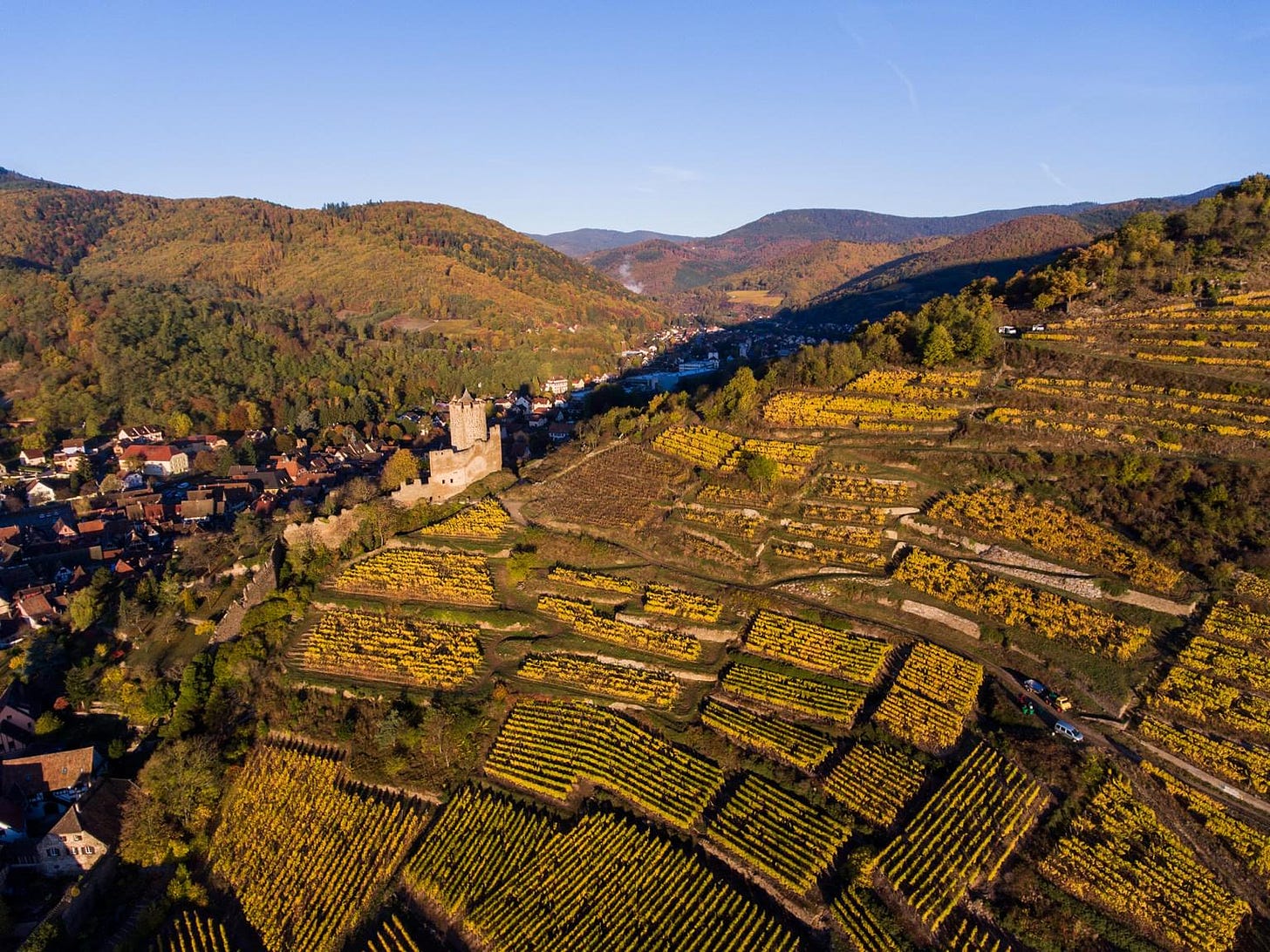💪 Warm up time
Let’s look at the ripening time for classic blends from classic regions today. Consider the following ripening order:
Bordeaux blend: Merlot → Cabernet Franc → Cabernet Sauvignon → Petit Verdot
Rhone blend: Grenache → Syrah → Mourvèdre
Rioja blend: Maturana Tinta → Tempranillo → Graciano → Garnacha → Mazuelo
Duoro blend: Tinta Barroca → Touriga Franca → Tinta Roriz → Touriga Nacional → Tinto Cão
The answer to this warm up question is at the end of today’s entry.
⏳ Past exam question
Question two from the May 2022 exam
Describe the characteristics of the ‘noble’ white grape varieties grown in Alsace. (60% weighting)
Explain how these varieties can be used to produce wines of differing styles and quality levels in this region. (40% weighting)

💡 Examiner’s report
© Wine & Spirit Education Trust
The quality of answer here varied enormously. There were some excellent scripts, full of detail and explanation that was relevant and answered the question that had been set, showing sound understanding of the connection between the characteristics of grape varieties and the types of wine they can produce. At the other end of the scale were some extremely poor answers – in some instances pages long but almost completely devoid of relevant hard facts. There were also answers amounting to barely a side of text and therefore inevitably too simplistic.
The weighting attached to the two parts of this question had a significant impact on the final outcome, as a poor performance in the first invariably led to a fail grade overall. This affected a large number of candidates, as the first part relied entirely on the provision of hard facts. The first hurdle was correctly identifying the ‘noble’ varieties, namely Riesling, Gewurztraminer, Pinot Gris and Muscat. Many candidates got this wrong and lost marks as a result. Muscat was the variety that was most frequently omitted. Some candidates confused it with different varieties with a similar name – Muscadet or Muscadelle. The inclusion of ‘non-noble’ varieties such as Silvaner, Auxerrois and Pinot Blanc was also a common problem – the latter often substituted for Pinot Gris. Some candidates clearly had no idea what the term ‘noble varieties’ meant in the context of Alsace, writing about varieties such as Chardonnay and Sauvignon Blanc. Some wrote about black varieties in a question that was solely about white grapes.
Many candidates interpreted the word ‘characteristics’ as requiring simply a description of a wine, rather than a grape variety. This generated multiple generic descriptions of white wines with green/citrus/tropical/stone fruit character and structural components all described the medium range, and unconvincing answers which failed to differentiate between four varieties with overtly different aroma/flavour and structural profiles. Expected characteristics to address included whether the variety was early or late budding, had an affinity with any particular feature of the location such as soil or climate, whether it was early or late ripening, whether it was susceptible to any particular pests and diseases, etc
Poor exam technique was nearly always the reason for low marks in the second part of the question. The correct approach here was to ‘step away’ from the varieties as individual entities and consider what it is that determines differences in style and quality in the wines made from these varieties as opposed to ‘non-noble’ varieties. This is key because of the significance of these varieties in the production of Grand Cru, Vendages Tardive and Sélection de Grain Nobles wines. However, it was also important to consider the use of these varieties in the production of the broader Alsace AOC wines since the question had referred to different ‘quality levels’ as well as differences in style.
🥁 Answer to today’s warm up question
✔️ Bordeaux blend: Merlot → Cabernet Franc → Cabernet Sauvignon → Petit Verdot
❌ Rhone blend:
Grenache →Syrah → Grenache → Mourvèdre✔️ Rioja blend: Maturana Tinta → Tempranillo → Graciano → Garnacha → Mazuelo
❌ Duoro blend: Tinta Barroca →
Touriga Franca →Tinta Roriz → Touriga Franca ≈ Touriga Nacional → Tinto Cão
Here is a little cheatsheet:
Early ripening varieties
Tempranillo/Tinta Roriz ripens early-mid season, 2 weeks after Chasselas.
Tinta Barroca ripens early, 1 1/2-2 weeks after Chasselas.
Trousseau/Maturana Tinta ripens early, 1 1/2 weeks after Chasselas.
Mid ripening varieties
Cab Franc ripens mid season, 2 1/2-3 weeks after Chasselas.
Merlot ripens mid-season, 2 1/2 weeks after Chasselas.
Syrah ripens mid-season, 2 1/2 weeks after Chasselas.
Touriga Franca ripens mid-season, 3 weeks after Chasselas.
Touriga Nacional ripens mid-season, 3 weeks after Chasselas.
Late ripening varieties
Cab Sauv ripens late, 3 to 3½ weeks after Chasselas.
Carignan/Mazuelo ripens very late, 4½ weeks after Chasselas.
Graciano ripens late.
Grenache/Garnacha ripens late, 4 weeks after Chasselas.
Mourvèdre ripens very late, 4 1/2 weeks after Chasselas.
Petit Verdot ripens late, 3 1/2-4 weeks after Chasselas.
Tinta Cão ripens late, 3 1/2 weeks after Chasselas.
A rather difficult exercise for a Friday morning 🙈 Let’s make this weekend fun and productive at the same time 🤓








